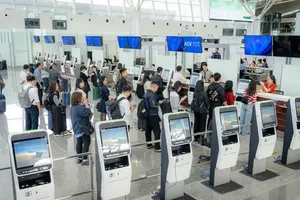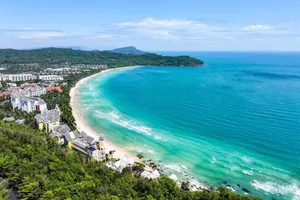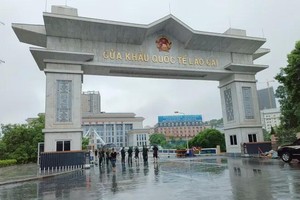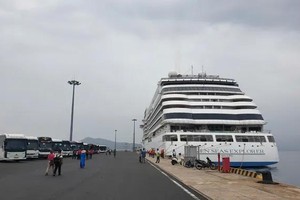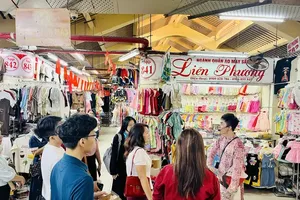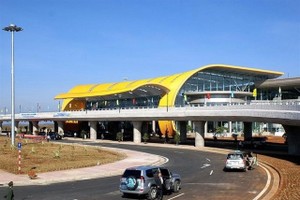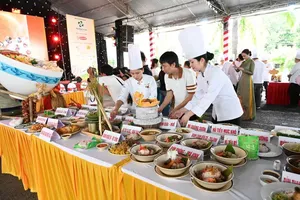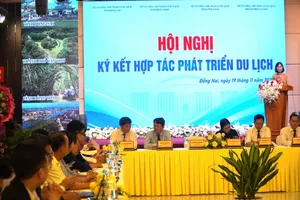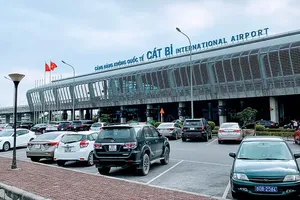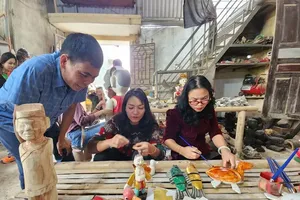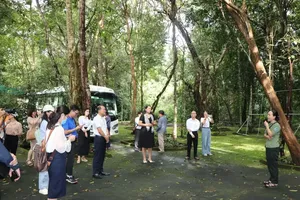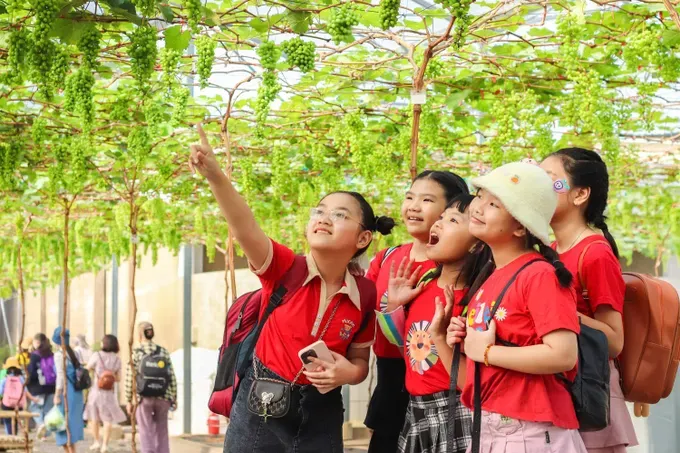
This approach opens new directions for agricultural production linking farming with community-based tourism and fostering responsible and sustainable consumption.
Unique and effective agro-tourism models thrive in HCMC
From an idea launched in March 2023 to develop ecological tourism through stingless bee farming, Xuyen Moc Tourism and Event Company partnered with local farmers in Binh Chau Commune to establish the Ho Tram Stingless Bee Farm. According to owner Vo Van Duc, the farm now manages over 1,500 bee colonies across a one-hectare longan garden.
Visitors can pick fruit, take photos, sample the delicate sweetness of stingless bee honey, or purchase it as a local specialty. The main honey harvest season from March to July coincides with the longan season, making it a particularly popular time for tourists.
Beyond tourism, the farm earns significant income from nearly 700 liters of honey annually. The success of this model has since inspired 19 other households in Ho Tram and Binh Chau communes to adopt stingless bee farming, some combining it with tourism activities.
According to Chairman Nguyen Trong Nhung of the Ho Tram Farmers’ Association, this new direction, which integrates agriculture and tourism, is generating strong economic benefits for both local businesses and farmer. At the same time, it serves to promote the natural beauty and rural lifestyle of Ho Tram Commune to visitors from both nearby and distant locations.
Similarly, in Thieng Lieng Hamlet of Thanh An Island Commune, there are about 211 households living mainly by salt production, fishing, and oyster farming at the river mouth. Each salt season lasts for 6 months, usually starting in the 10th lunar month.
In December 2022, the Ho Chi Minh City Department of Tourism announced Thieng Lieng Hamlet as the city's first typical community tourism destination. Households on the island have utilized their existing spaces to open homestays, restaurants, and rest stops for tourists, combined with the experience of salt production.
Ms. Thu Hien, a salt worker who has ventured into tourism, shared that to attract tourists, her family allows guests to experience a day as a salt worker, participating in salt harvesting. She happily shared that from being a salt worker, she and her family members are now on-site tour guides. Moreover, she revealed that selling souvenirs and providing services also helps improve their income, and life on the island has become more joyful.
Meanwhile, at Suoi Tien Cultural Tourism Area, Suoi Tien Farm is a prominent ecological destination boasting 31 rare fruit varieties such as French black candy grapes, Indian red pomegranates, Brazilian cherries, and more. All are grown using high technology from Israel and Japan in a modern greenhouse environment.
Deputy General Director of Suoi Tien Cultural Tourism Area Bui Thi To Trinh stated that the high-tech agricultural tourism model is proving effective, as the unit has welcomed millions of visitors for sightseeing and entertainment since the beginning of the year. The Suoi Tien Farm model is not only attractive for its experiences but also has educational value, raising awareness among the public, especially the younger generation, about green living, smart consumption, and the importance of clean agriculture.
Strategic direction for Ho Chi Minh City's tourism sector
According to the Ho Chi Minh City Department of Tourism, green agricultural tourism has become a strategic direction to diversify products and, at the same time, extend the length of stay for tourists. Green agricultural tourism products are not just about sightseeing and relaxation, but also integrate agriculture with education, experience, and green consumption. Concurrently, OCOP (One Commune One Product) products are also being introduced by the city's tourism sector to cater to the recreational needs of visitors.
Commenting on this matter, Deputy Director Le Truong Hien Hoa of the Ho Chi Minh City Department of Tourism, noted that in recent times, many green tourism products in the city, when widely introduced, have attracted a large number of domestic tourists, especially young people and families with small children. The development of green agricultural tourism associated with OCOP products not only helps HCMC diversify its offerings but also creates a sustainable tourism ecosystem where tourists, businesses, and the community all benefit.
Furthermore, the link between OCOP products and tourism is considered a crucial key for HCMC to effectively exploit the potential of its rural areas.
Meanwhile, a representative from the Ho Chi Minh City Tourism Association assessed that the development of agricultural and community tourism products, linked to the preservation of traditional craft villages, will contribute to repositioning the city's tourism brand. The Association has also been coordinating with relevant units to organize surveys, develop tours and routes, and create promotional programs for OCOP products associated with typical agricultural destinations in the city's suburban areas.
